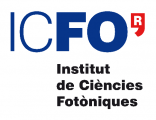We are participating in a new European project as of January 2014. The web site is now alive: http://babylux-project.eu/
BabyLux – An Optical Neuro-Monitor of Cerebral Oxygen Metabolism and Blood Flow for Neonatology – is a project that aims to provide an innovative and reliable tool to monitor and assess brain blood flow and oxygenation in extremely preterm neonates. The device can be brought to the bedside, measurements can be done in a few minutes and repeatedly, if the condition is critical. The project takes up complete R&D works and extends already tested prototypes to the level of demonstrator, bridging the gap between research products and commercialization.
The system uses photonic technologies, such as diffuse correlation spectroscopy (DCS) and time resolved near-infrared spectroscopy (TRS). This innovative combination provides an accurate state-of-the-art and robustness in TRS, and introduces, for the first time, DCS in a combined instrument. After an initial laboratory demonstration, a trial period in real-life settings will follow, conducted in parallel both at the Mangiagalli Hospital in Milan (Italy) and at the Rigshospitalet in Copenhagen (Denmark). Functioning and benefits will be evaluated by professional end-users during validation tests, carried out in conditions fitting in the clinical workflow, protocols and procedures.
Funded by the European Commission under the ICT Policy Support Programme (ICT PSP), as part of the Competitiveness and Innovation Framework Program, BabyLux is a quite demanding challenge, an important initiative lead at an international level in 4 different countries: Italy, Spain, Germany and Denmark. The 9 scientific and technical partners involved are: Politecnico di Milano, Fondazione Politecnico di Milano, ICFO-Institute of Photonic Sciences, Fraunhofer Institute for Production Technology IPT, Hemophotonics SL, PicoQuant GmbH, Loop, Capital Region of Denmark and Fondazione IRCCS Ca’ Granda Ospedale Maggiore Policlinico.
The project will last 3 years, from January 2014 to December 2016.

